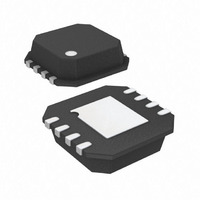ADA4817-1ACPZ-R7 Analog Devices Inc, ADA4817-1ACPZ-R7 Datasheet - Page 21

ADA4817-1ACPZ-R7
Manufacturer Part Number
ADA4817-1ACPZ-R7
Description
Hi Speed FET Input Amp
Manufacturer
Analog Devices Inc
Series
FastFET™r
Datasheet
1.ADA4817-1ACPZ-R7.pdf
(24 pages)
Specifications of ADA4817-1ACPZ-R7
Amplifier Type
Voltage Feedback
Number Of Circuits
1
Slew Rate
870 V/µs
Gain Bandwidth Product
410MHz
-3db Bandwidth
1.05GHz
Current - Input Bias
2pA
Voltage - Input Offset
400µV
Current - Supply
19mA
Current - Output / Channel
40mA
Voltage - Supply, Single/dual (±)
5 V ~ 10 V, ±2.5 V ~ 5 V
Operating Temperature
-40°C ~ 105°C
Mounting Type
Surface Mount
Package / Case
8-LFCSP
Lead Free Status / RoHS Status
Lead free / RoHS Compliant
Output Type
-
Lead Free Status / RoHS Status
Lead free / RoHS Compliant
Other names
ADA4817-1ACPZ-R7TR
Available stocks
Company
Part Number
Manufacturer
Quantity
Price
Company:
Part Number:
ADA4817-1ACPZ-R7
Manufacturer:
Aptina
Quantity:
1 500
Part Number:
ADA4817-1ACPZ-R7
Manufacturer:
ADI/亚德诺
Quantity:
20 000
ACTIVE LOW-PASS FILTER (LPF)
Active filters are used in many applications such as antialiasing
filters and high frequency communication IF strips.
With a 410 MHz gain bandwidth product and high slew rate,
the ADA4817-1/ADA4817-2 is an ideal candidate for active
filters. Moreover, thanks to the low input bias current provided
by the FET stage, the ADA4817-1/ADA4817-2 eliminate any dc
errors. Figure 48 shows the frequency response of 90 MHz and
45 MHz LPFs. In addition to the bandwidth requirements, the
slew rate must be capable of supporting the full power band-
width of the filter. In this case, a 90 MHz bandwidth with a
2 V p-p output swing requires at least 870 V/μs. This per-
formance is achievable at 90 MHz only because of the wide
bandwidth and high slew rate of the ADA4817-1/ADA4817-2.
The circuit shown in Figure 49 is a 4-pole, Sallen-Key, low-pass
filter (LPF). The filter comprises two identical cascaded Sallen-
Key LPF sections, each with a fixed gain of G = 2. The net gain
of the filter is equal to G = 4 or 12 dB. The actual gain shown in
Figure 48 is 12 dB. This does not take into account the output
voltage being divided in half by the series matching termination
resistor, R
Setting the resistors equal to each other greatly simplifies the
design equations for the Sallen-Key filter. To achieve 90 MHz
the value of R should be set to 182 Ω. However, if the value of R
is doubled, the corner frequency is cut in half to 45 MHz. This
would be an easy way to tune the filter by simply multiplying
the value of R (182 Ω) by the ratio of 90 MHz and the new
corner frequency in megahertz. Figure 48 shows the output of
each stage is of the filter and the two different filters corres-
ponding to R = 182 Ω and R = 365 Ω. It is not recommended
to increase the corner frequency beyond 90 MHz due to
bandwidth and slew rate limitations unless unity-gain stages
are acceptable.
T
, and the load resistor.
+IN1
49.9Ω
R
T
R
5.6pF
R
C2
348Ω
R2
Figure 49. 4-Pole Sallen-Key Low-Pass Filter (ADA4817-2)
U1
+5V
–5V
0.1µF
0.1µF
3.9pF
348Ω
10µF
10µF
C1
R1
Rev. 0 | Page 21 of 24
OUT1
R
Resistor values are kept low for minimal noise contribution,
offset voltage, and optimal frequency response. Due to the low
capacitance values used in the filter circuit, the PCB layout and
minimization of parasitics is critical. A few picofarads can detune
the corner frequency, f
in Figure 49 actually incorporate some stray PCB capacitance.
Capacitor selection is critical for optimal filter performance.
Capacitors with low temperature coefficients, such as NPO
ceramic capacitors and silver mica, are good choices for filter
elements.
5.6pF
R
C4
348Ω
–12
–15
–18
–21
–24
–27
–30
–33
–36
–39
–42
15
12
–3
–6
–9
100k
9
6
3
0
R4
U2
+5V
–5V
Figure 48. Low-Pass Filter Response
0.1µF
0.1µF
3.9pF
348Ω
10µF
10µF
C3
R3
1M
c
, of the filter. The capacitor values shown
OUT2, f = 90MHz
OUT1, f = 90MHz
FREQUENCY (Hz)
ADA4817-1/ADA4817-2
49.9Ω
OUT1, f = 45MHz
OUT2, f = 45MHz
R
T
10M
OUT2
100M
1G











